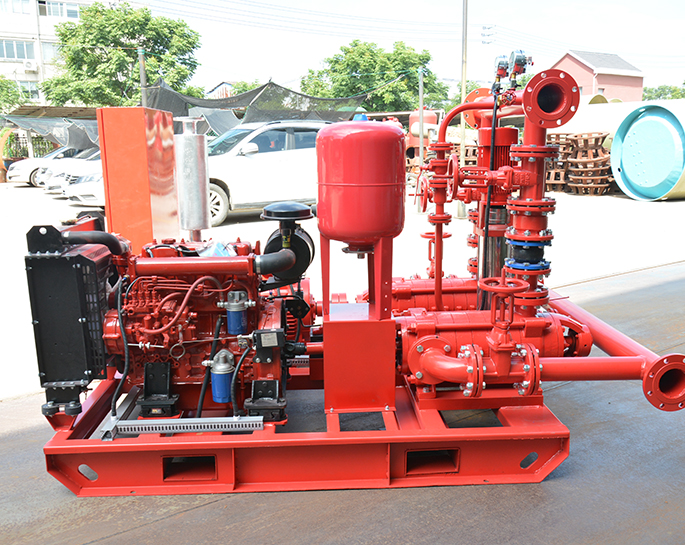How to solve the water hammer problem of fire pump?
Apr 25, 2023
Share:
Water hammer is a common problem in fire pumps that can cause serious damage to the pump and the associated piping. It is caused by a sudden increase in pressure in the pipe due to a rapid flow change. Fortunately, there are several ways to reduce or eliminate water hammer from occurring in a fire pump system.
The first step to solving the water hammer problem is to identify the cause. Common causes of water hammer include a sudden increase in flow, a valve closing too quickly, or a sudden stop in flow. By identifying the cause, it can be addressed and measures can be taken to reduce or eliminate it.
The next step is to install a shock absorber or water hammer arrestor. This device is installed in the piping system of the fire pump and acts as a cushion, absorbing the shock of sudden flow changes. It is important to ensure that the shock absorber is the right size and type for the particular fire pump system.
The third step is to install check valves and pressure relief valves. A check valve prevents backflow, while a pressure relief valve reduces the pressure in the system if it becomes too high. Both of these devices can help prevent water hammer from occurring.
The fourth step is to adjust the system’s pressure and flow rates. This can be done by adjusting the flow rate of the pump, or by adjusting the pressure of the water supply.
Finally, if all of these steps fail, it may be necessary to replace the existing fire pump with a new one that is better suited for the system. This should only be done after consulting with a professional and making sure that the new pump is the correct size and type.
By following these steps, it is possible to reduce or eliminate the water hammer problem in a fire pump system. It is important to remember that water hammer can cause serious damage to the pump and the associated piping, so it is important to take the necessary steps to prevent it.

The first step to solving the water hammer problem is to identify the cause. Common causes of water hammer include a sudden increase in flow, a valve closing too quickly, or a sudden stop in flow. By identifying the cause, it can be addressed and measures can be taken to reduce or eliminate it.
The next step is to install a shock absorber or water hammer arrestor. This device is installed in the piping system of the fire pump and acts as a cushion, absorbing the shock of sudden flow changes. It is important to ensure that the shock absorber is the right size and type for the particular fire pump system.
The third step is to install check valves and pressure relief valves. A check valve prevents backflow, while a pressure relief valve reduces the pressure in the system if it becomes too high. Both of these devices can help prevent water hammer from occurring.
The fourth step is to adjust the system’s pressure and flow rates. This can be done by adjusting the flow rate of the pump, or by adjusting the pressure of the water supply.
Finally, if all of these steps fail, it may be necessary to replace the existing fire pump with a new one that is better suited for the system. This should only be done after consulting with a professional and making sure that the new pump is the correct size and type.
By following these steps, it is possible to reduce or eliminate the water hammer problem in a fire pump system. It is important to remember that water hammer can cause serious damage to the pump and the associated piping, so it is important to take the necessary steps to prevent it.







